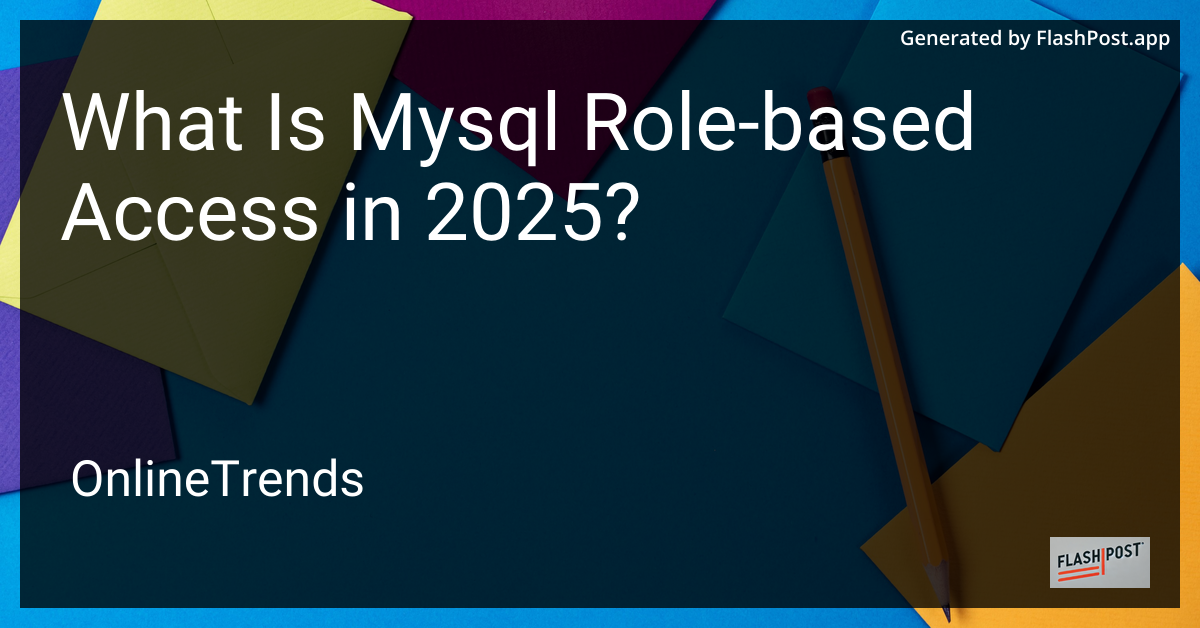
Best MySQL Books to Buy in 2025
| Product | Features | Price |
|---|---|---|
 MySQL Crash Course: A Hands-on Introduction to Database Development |
Buy It Now  |
|
 Murach's MySQL (4th Edition) Professional SQL Book & Reference Guide with Cheat Sheets - Complete Database Development Training for Retrieving, Updating & Managing Data with AWS Integration |
Buy It Now  |
|
 PHP & MySQL: Server-side Web Development |
Buy It Now  |
|
 Learning MySQL: Get a Handle on Your Data |
Buy It Now  |
|
 Efficient MySQL Performance: Best Practices and Techniques |
Buy It Now  |
In the dynamic world of database management, effective access control has become a pivotal concern. As of 2025, MySQL provides robust role-based access capabilities to streamline and enhance security measures for database environments. This article explores the ins and outs of MySQL role-based access and its significance for database administrators and developers alike.
Understanding Role-Based Access
Role-based access control (RBAC) refers to restricting system access to authorized users based on their assigned roles. In MySQL, roles serve as a collective set of privileges that can be granted to and inherited by various users, simplifying the process of managing user permissions.
Evolution of MySQL's Role-Based Access
Since the introduction of the role feature in MySQL 8.0, the database engine has evolved to offer more flexible and comprehensive access control mechanisms by 2025. These advancements include enhanced role hierarchies and automated role assignment to improve both security and efficiency.
Key Components of MySQL Role-Based Access
-
Roles: A role in MySQL is essentially a named collection of privileges. Administrators can define roles specific to different responsibilities, such as database administration, application development, and data analysis.
-
Privileges: These are specific access rights to database objects, such as tables, views, and procedures. Roles can include privileges like SELECT, INSERT, UPDATE, and DELETE, among others.
-
User Assignment: MySQL allows for seamless assignment and revocation of roles to individual users or groups. This reduces the complexity of managing user privileges directly.
-
Role Hierarchies: In 2025, MySQL permits role hierarchies, where a role inherits the privileges of another role, enabling granular control over access levels.
Advantages of Role-Based Access in MySQL 2025
-
Simplified User Management: By centralizing privilege management through roles, administrators can efficiently manage user access without dealing with individual permissions for each user.
-
Increased Security: Role-based access reduces the risk of privilege escalation attacks by ensuring users have only the necessary permissions for their roles.
-
Scalability: As organizations grow, role-based access scales easily to include new roles, users, and hierarchical structures without extensive reconfiguration.
-
Reduced Errors: By automating role assignments, the potential for human error decreases, ensuring consistent and secure access management.
Integrating MySQL Role-Based Access with Development
Leveraging role-based access control is crucial for modern application development, especially when integrating with frameworks like Spring Boot. For developers interested in deepening their MySQL integration, consider exploring how to call MySQL stored procedures in Spring Boot.
Conclusion
Role-based access in MySQL 2025 represents a milestone in database security and management. By adopting this robust system, organizations can ensure top-notch access control, streamlined user management, and enhanced application performance. Databases optimized for role-based access promise not only security but also improved efficiency and scalability. For further insights into enhancing your MySQL databases, explore how to optimize MySQL performance for large datasets and learn practical tips such as getting not null column names.
By staying informed about the latest advancements and best practices, database professionals can adapt to the ever-evolving landscape of data management in 2025 and beyond.